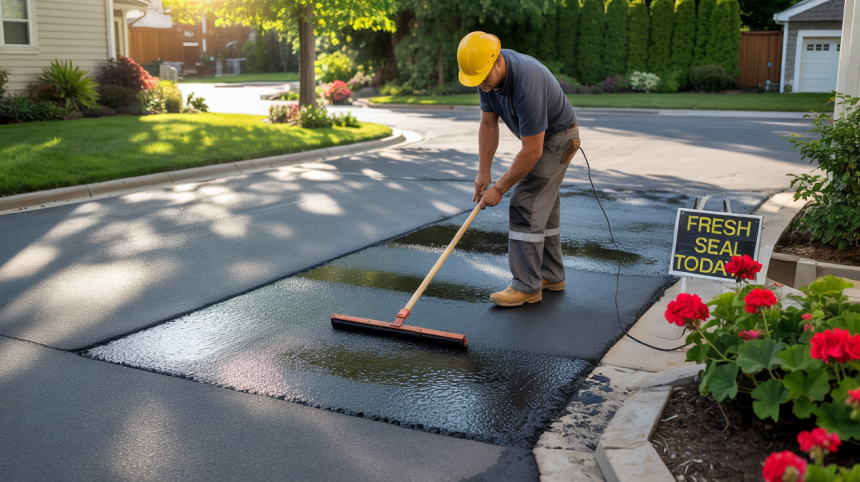Your driveway serves as the gateway to your home, making it one of the first things people notice. Over time, however, harsh weather conditions, oil stains, and everyday wear can damage its surface, leaving it cracked and worn.
Sealing your driveway is an easy and cost-effective solution to protect it from further damage and improve its appearance.
But how do you know when it’s the right time to apply a fresh coat of sealant? Sealing too early or too late can result in wasted effort and unnecessary costs.
In this guide, we’ll explain why sealing your driveway is so important, the best times to do it, and how to determine if it’s too late.
Why Sealing Your Driveway is Important
Your driveway experiences a lot of wear and tear throughout the year. Whether it’s rain, snow, ice, or UV rays from the sun, these elements can break down the surface if it is not properly protected.
Without sealing, water can seep into cracks, expanding during the winter freeze and worsening the damage. UV rays, on the other hand, can cause asphalt to become brittle and deteriorate. A well-applied sealant creates a protective barrier that prevents moisture penetration and shields your driveway from sun damage.
Sealing also prevents minor cracks from developing into major issues, such as potholes, which can be expensive to repair. By regularly applying sealant, you fill in those tiny gaps before they expand, keeping your driveway in great condition for longer.
Furthermore, a freshly sealed driveway improves the curb appeal of your home, making it more attractive to potential buyers. A well-maintained driveway can even increase the overall value of your property.
Signs It’s Too Late to Seal Your Driveway
Sometimes, the damage is too severe for sealing alone to help. Here are a few signs that it’s too late:
-
Severe Weather Damage: If the surface is chalky, powdery, or exhibiting widespread fading, the binding agents in the material have broken down too extensively for a sealant to be effective.
-
Large Cracks or Potholes: Sealants can fill small cracks, but they can’t repair significant damage. Cracks wider than 1/4 inch or any potholes need proper repairs before sealing.
-
Surface Deterioration: A rough or gravelly texture, loose stones, or sunken areas signal that the base is compromised. Sealing these surfaces will only be a temporary solution.
Types of Driveways That Can Be Sealed
Not all driveways are the same, and the type of surface you have influences how and when you should seal it.
1. Asphalt Driveways
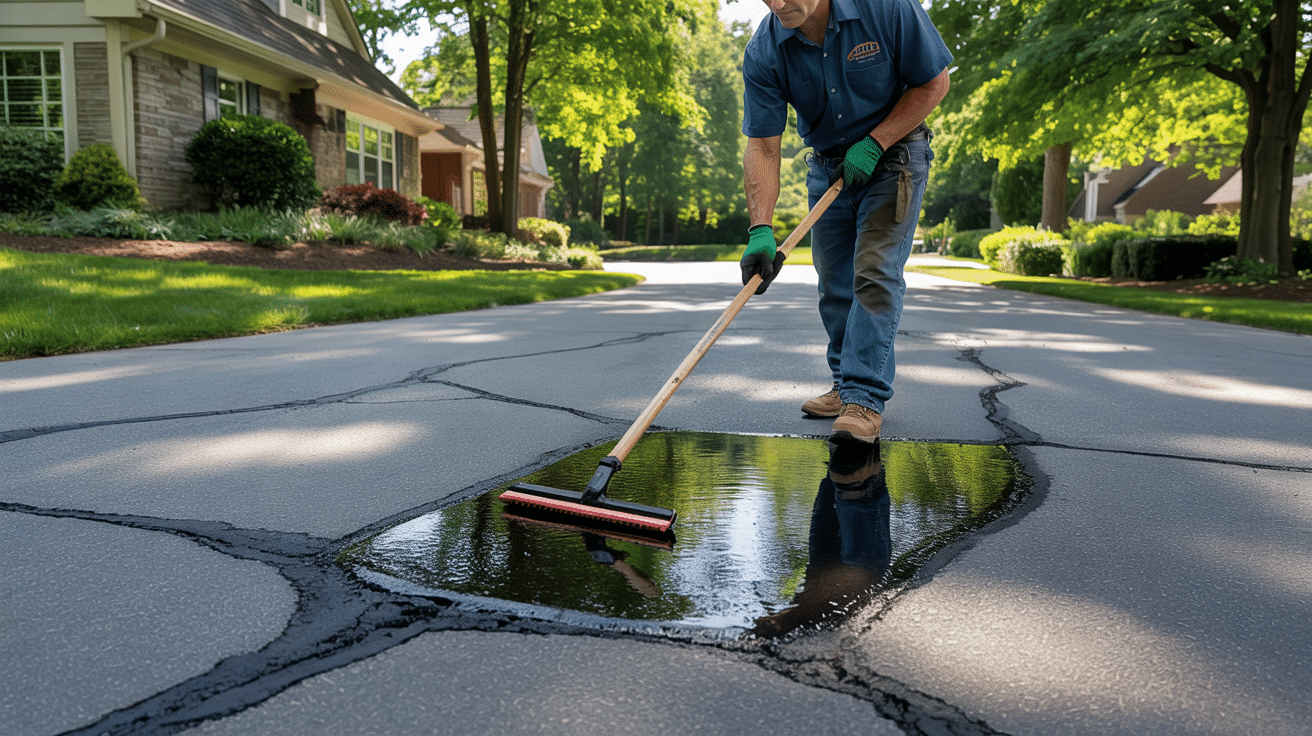
Asphalt driveways are a common choice and require sealing every 2-3 years to maintain their integrity. Asphalt is porous and flexible, which makes it prone to moisture infiltration and damage from the elements.
Regular sealing helps protect against water penetration, UV damage, and wear. Coal tar sealers are often used due to their durability, while acrylic sealers offer a quicker drying time and are more eco-friendly, making them a good alternative.
2. Concrete Driveways
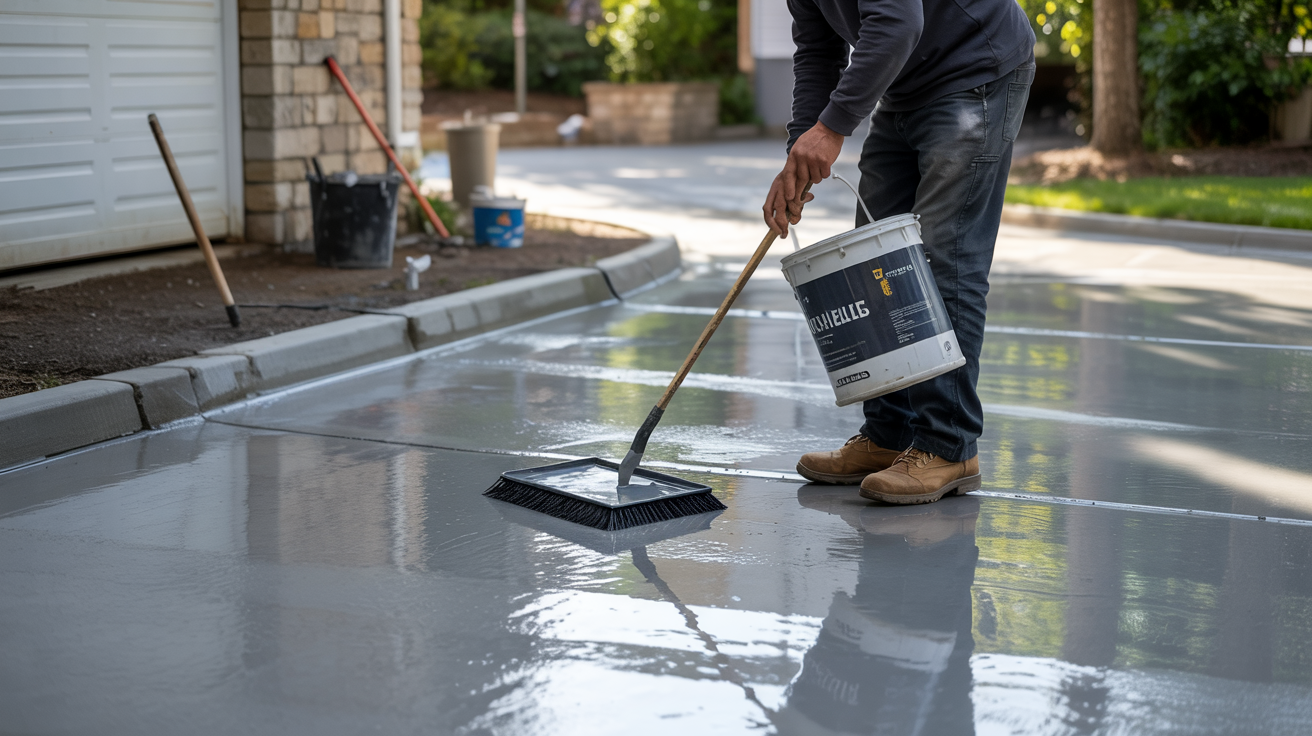
Concrete driveways are more durable than asphalt but still require sealing every 2-5 years to protect them from water infiltration, stains, and cracks. Without proper sealing, water can penetrate the surface and cause damage over time.
Various sealers are available for concrete, including acrylic for a glossy finish, penetrating for a natural look, and polyurethane for superior protection against weather and chemicals.
3. Gravel Driveways
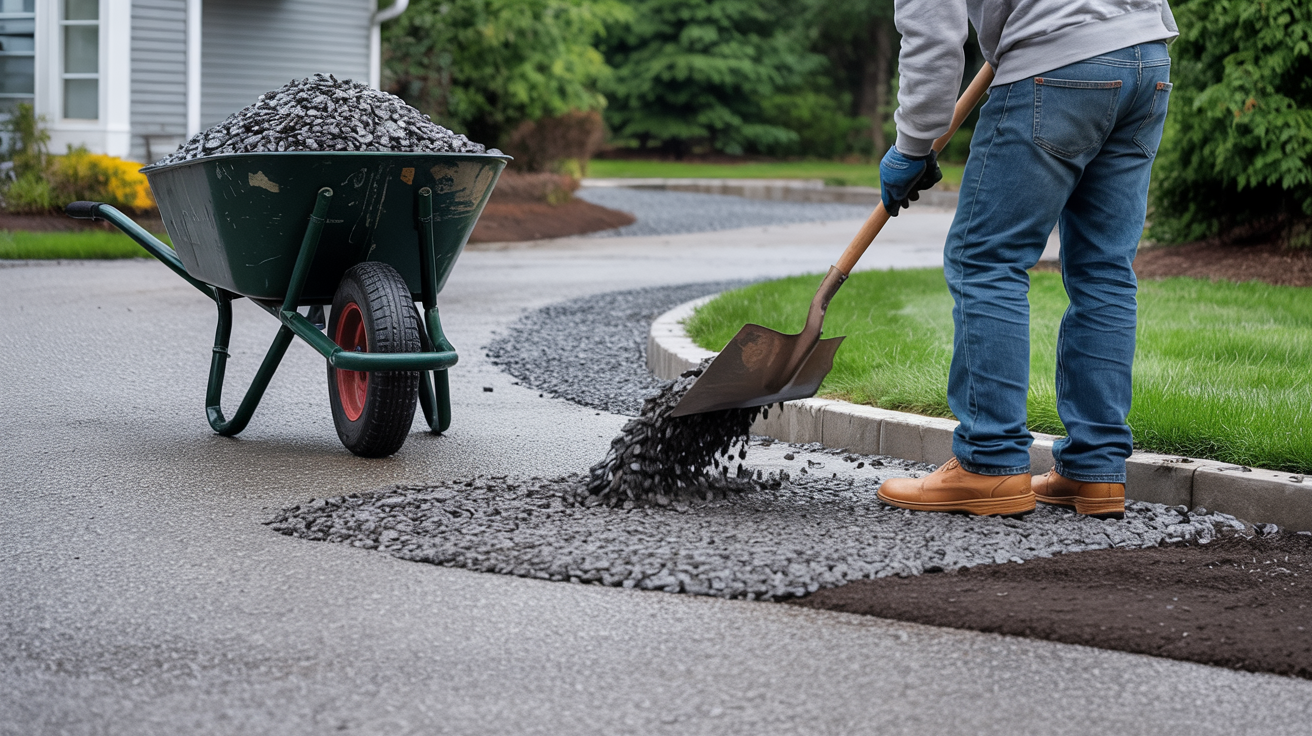
Gravel driveways can’t be sealed, but they do require regular maintenance. Over time, gravel can shift, creating uneven surfaces and ruts. To keep the driveway in good condition, regularly add fresh gravel and grade the surface to improve drainage.
Some homeowners also use gravel stabilizers, which help bind the gravel and prevent it from shifting, making it more durable and reducing the need for frequent replenishing.
4. Paver Driveways
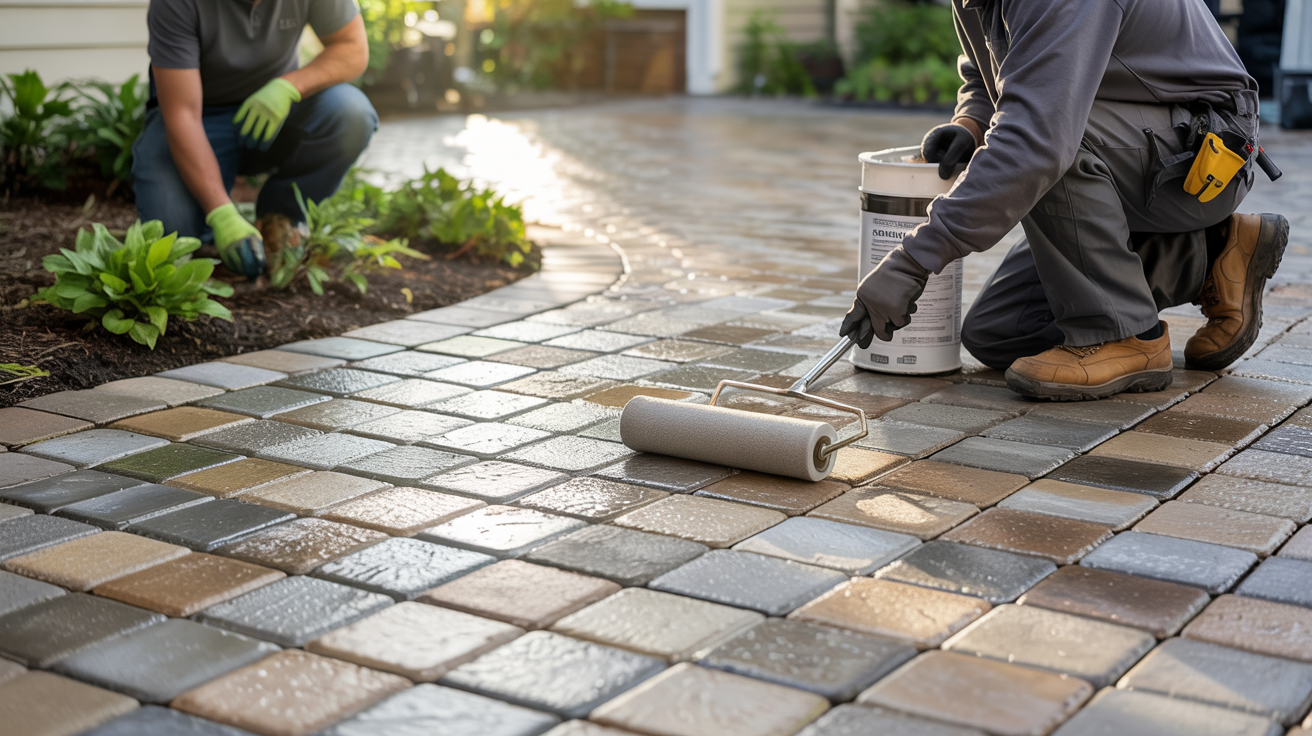
Sealing paver driveways can help prevent weed growth, stains, and shifting. Sealing also helps lock the sand between pavers in place, ensuring the surface remains stable and even.
Additionally, it enhances the color of the stone and gives it a polished look. Paver driveways should be resealed every 3-5 years to maintain their appearance and protect them from wear and tear.
5. Exposed Aggregate
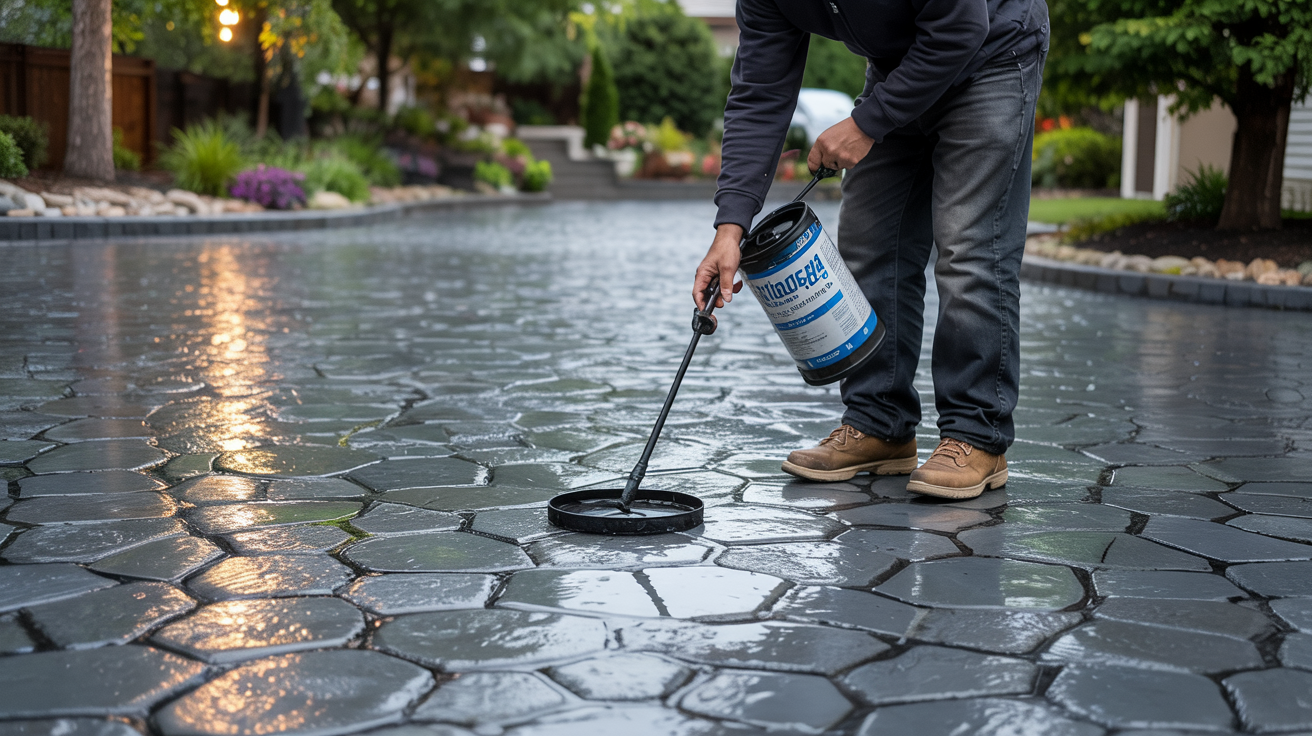
Exposed aggregate driveways have a decorative stone finish that improves curb appeal. However, they require sealing every 2-3 years to protect the surface and prevent staining.
Clear sealants are ideal because they protect the stones without obscuring their natural beauty. Sealing helps maintain the color, texture, and overall condition of the driveway, ensuring it stays visually appealing while offering long-lasting durability.
Best Time to Seal A Driveway
Ideal Conditions:
The best time to apply sealant is during moderate temperatures, between 50°F and 90°F, on dry days. This ensures the sealant adheres properly and cures at the right rate.
Avoid Extreme Weather:
It’s important to avoid applying sealant during extreme weather. In summer, high heat may cause the sealant to dry too quickly, which can prevent proper bonding. In winter, low temperatures can prevent the sealant from curing effectively.
Best Seasons to Seal:
Spring and early fall are typically the best times to seal your driveway. In spring, you can repair any winter damage and seal your driveway before the summer heat arrives. In early fall, cooler temperatures allow for proper curing before winter weather sets in.
Why Spring and Fall Are Ideal:
Both seasons offer more consistent weather, reducing the chances of rain or other issues interfering with the application.
Long-Term Driveway Maintenance Plan
Regular maintenance keeps your driveway looking good and lasting longer. With proper care, you can avoid costly repairs and extend your driveway’s life by many years. Here’s a complete plan to help you maintain your driveway for the long haul.
Basic Cleaning Routine
Keep your driveway clean as the first step in good maintenance. Sweep away leaves, sticks, and trash at least once a week. These items can stain your driveway if left too long.
Remove oil spots as soon as you see them. Fresh oil comes up easier than old stains. Use cat litter to soak up new spills. For set-in stains, try a mix of dish soap and warm water.
Pressure wash your driveway once or twice yearly. This removes dirt that regular sweeping misses. If you don’t own a pressure washer, you can rent one from most home stores.
Sealing Schedule
Different driveway types need sealing at various times:
Asphalt driveways need fresh sealer every 2-3 years. Look for signs like fading color or small cracks as hints it’s time to seal.
Concrete driveways can go longer between sealing, about 3-5 years. Good sealer keeps water out and stops winter salt damage.
Paver driveways also need sealing every 3-5 years. The sealer locks the sand between pavers and brings out their color.
Mark your calendar to check sealing needs each spring. This helps you stay on track with this key task.
Cost Comparison: Sealing vs. Replacement
| Service Type | Cost per Square Foot | Cost for 1,000 Square Feet |
|---|---|---|
| DIY Sealing | $0.08 – $0.25 | $150 – $500 |
| Professional Sealing | $0.15 – $0.25 | $150 – $500 |
| Asphalt Replacement | $3 – $7 | $3,000 – $7,000 |
| Concrete Replacement | $6 – $10 | $6,000 – $10,000 |
Common Mistakes to Avoid When Sealing Your Driveway
1. Sealing on a Dirty Surface
Mistake: Applying sealant over dirt or oil prevents proper adhesion.
Fix: Clean the driveway thoroughly using a pressure washer and degreaser to remove oil stains.
2. Sealing in Poor Weather Conditions
Mistake: Sealing on hot, rainy, or windy days can cause uneven drying or peeling.
Fix: Seal on dry days with temperatures between 50°F and 90°F, ensuring 24 hours of dry conditions.
3. Applying Sealant Too Thickly
Mistake: A thick layer can lead to uneven coverage and slow drying.
Fix: Apply thin, even coats, letting each layer dry before adding the next.
4. Not Allowing Enough Drying Time
Mistake: Walking or driving on the driveway too soon ruins the finish.
Fix: Allow the sealant to dry fully, typically 24-48 hours, depending on the weather conditions.
5. Using the Wrong Sealant
Mistake: Using the wrong sealant can result in inadequate protection.
Fix: Select the appropriate sealant based on your driveway’s material (e.g., asphalt, concrete).
By avoiding these common mistakes, you can ensure that your driveway stays protected, looks great, and lasts longer.
Conclusion
Sealing your driveway is one of the best ways to protect your investment in your home’s exterior while keeping it looking fresh and inviting.
It enhances curb appeal and protects your driveway from harsh elements, preventing costly repairs in the future. Knowing when to seal and when to repair is crucial for maximizing the benefits of your sealant.
Waiting too long can lead to irreparable damage, so it’s crucial to act at the right time. Sealing your driveway isn’t just about maintenance—it’s about preserving the longevity of your home’s first impression.
Don’t wait for the damage to worsen—seal your driveway at the right time to enjoy lasting protection and beauty.
Frequently Asked Questions
What Are the Negatives About Sealing a Driveway?
Sealing a driveway can trap moisture, which can lead to cracking and deterioration. It may also require frequent reapplication and can create a slippery surface when wet.
Does Sealing a Driveway Fix Cracks?
Sealing a driveway does not fix cracks; it only temporarily covers them. To properly repair cracks, they need to be cleaned and filled before sealing.
Is Oil-Based Driveway Sealer Better?
Oil-based driveway sealers are generally more durable and resistant to stains, but they take longer to dry and emit stronger odors. Therefore, they may not be as environmentally friendly as water-based sealers.

